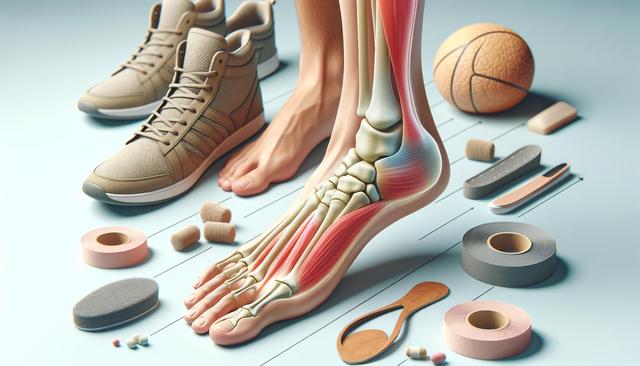Identifying a Callus on Top of Foot
A callus on top of foot is a common issue, particularly among individuals who wear tight or ill-fitting shoes. These calluses form as a result of repeated friction or pressure on the skin, causing it to thicken over time. While they are generally harmless, they can become painful if left untreated or if additional pressure continues to irritate the area. People who engage in activities that involve repetitive foot movement, such as running or dancing, are especially prone to developing such calluses.
Common symptoms of a callus on top of the foot include:
- Thickened, hardened patches of skin
- A dry or waxy appearance on the affected area
- Discomfort or tenderness when wearing shoes
To manage these issues, it’s important to choose properly fitting footwear and use protective padding where necessary. Mild cases can often be treated at home, but persistent or painful calluses may require professional evaluation.
What Causes Sore Instep and Top of Foot
The instep and top of the foot can become sore due to various reasons ranging from overuse to structural imbalances. A sore instep and top of foot can occur in athletes, people who stand for long hours, or those who have recently changed their activity levels or footwear. This type of discomfort might also be linked to tendon inflammation, nerve compression, or even early signs of arthritis.
Potential causes include:
- Extensor tendonitis caused by overuse or tight laces
- Stress fractures from repetitive impact
- Improper footwear lacking arch or top foot support
To alleviate pain, rest and ice can help reduce inflammation. Stretching exercises and supportive footwear can also be beneficial. If pain persists, it is advisable to consult a medical professional for further diagnostic testing.
Understanding Plantar Callus and Its Impact
A plantar callus is a thick, hardened area of skin that develops on the sole of the foot, commonly under the heel or ball. Unlike a callus on top of foot, a plantar callus forms due to pressure exerted when walking or standing. These calluses can be particularly uncomfortable due to the constant pressure they endure during daily activities.
Key factors that contribute to plantar callus formation include:
- Walking barefoot frequently
- Wearing shoes without adequate cushioning
- Foot deformities that alter weight distribution
Over time, these calluses can affect gait and cause additional foot problems if not managed properly. Monitoring the condition and using cushioned insoles can help reduce pressure and prevent further development.
Effective Plantar Callus Treatment Options
When it comes to plantar callus treatment, several strategies can help reduce discomfort and improve foot health. The goal is to relieve pressure, remove the thickened skin safely, and address the underlying cause to prevent recurrence. While at-home remedies can be effective, persistent or painful calluses may require professional care.
Common treatment methods include:
- Using pumice stones or foot files to gently exfoliate the thickened skin
- Applying moisturizing creams designed for callused skin
- Wearing cushioned insoles to redistribute pressure
- Consulting a podiatrist for more severe cases
It’s important to avoid cutting or shaving the callus at home, as this can lead to infection or injury. For individuals with diabetes or circulation issues, professional care is strongly recommended.
Safe and Gentle Plantar Callus Removal Techniques
Plantar callus removal should be approached with care to avoid damaging the surrounding skin. While many over-the-counter treatments are available, understanding the safest method for your foot type and condition is essential. Regular maintenance and preventive strategies can also reduce the frequency of callus formation.
Safe removal techniques include:
- Soaking the feet in warm water to soften the callus
- Using non-metallic foot files or pumice stones post-soak
- Applying urea-based creams to break down thickened skin
- Scheduling routine foot care appointments if calluses are recurrent
In addition to removal, focusing on footwear choices and foot hygiene can significantly reduce the chance of new calluses forming. Shoes that fit well and offer arch support help limit friction and pressure that commonly lead to plantar callus on foot.
Conclusion: Taking Care of the Top and Bottom of Your Feet
Addressing foot health means paying attention to both the top and bottom of the foot. Whether you’re dealing with a callus on top of foot, a sore instep and top of foot, or managing a plantar callus on foot, early intervention and preventive care are essential. Proper footwear, regular maintenance, and awareness of changes in your feet can prevent minor issues from becoming major concerns. If discomfort persists, seeking professional advice ensures you get tailored treatment and long-term relief. A proactive approach to foot care can support your comfort, mobility, and overall well-being.












